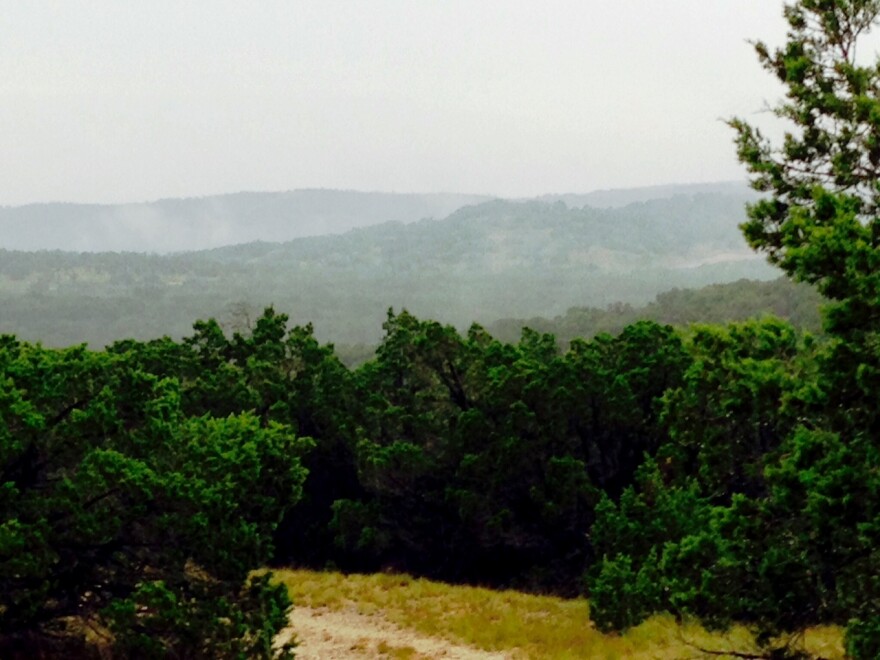There’s a large state natural area north of town that’s being prepared for the public and on Tuesday I got to take a tour.
While Government Canyon is more than four times its size, the Albert and Bessie Kronkosky State Natural Area is still pretty huge: 3,757 acres.
James Rice is the superintendent, and at this point the only employee of Kronkosky, which is seven miles west of Boerne in a particularly hilly stretch of Hwy. 46.
“Albert and Bessie Kronkosky started buying up this property in 1946 and they wanted to preserve it,” Rice said.
And preserve it they have. Now, thanks to the Kronkosky Foundation, the land straddling Western Kendall and Eastern Bandera Counties was deeded to the state.
“In July of 2011 parks and wildlife picked it up and we’re in the process of developing it into a state natural area," Rice said. "A state natural area, the number one purpose is for resource conservation. The resource comes first."

I asked him what the process was for making it available to the public.
“What we have to do, number one, is make baseline surveys. That’s where everything starts," he explained. "We have to identify fragile areas, we have to identify areas that will take some impact that the public will bring.”
He supervises volunteers to survey and count plant and wildlife populations, including endangered birds like golden-cheeked warblers. Having those numbers, and re-surveying every year gives them critical information for tracking trends and maintaining the land’s health. From those numbers they glean best practices.
“We’ll then put together a public use plan," Rice said. "And we just had our first public meeting last week in Boerne. The public has to be involved in the process.”

Public meetings invite ideas for use of the area, but the baseline is what the land can handle. Full park admission by the public is still four or five years away, but once it opens, here’s what kind of use you can expect.
“It’ll be hiking, backpacking, things of that nature; primitive camping, tent camping," Rice said. "Any recreational opportunities that we’re going to put in out here cannot deplete those natural resources.”
We took a bouncy ride in his four-wheel-drive pickup, where Rice showed me part of the Kronkosky, pointing out its unique features. This park has an unusual advantage: a sparse deer population. Why is that a good thing? Because they eat the leaves off saplings that will become larger parent trees in coming years, killing them in the process. Rice worries about the Hill Country.
“What are we going to be left with in about 50, 60, 70 years?" he said
“Cedar” I answered.
“Cedar, that’s exactly right.”

I asked him about their deer mystery: why were there so few on the Kronkosky?
“Well, there was a deer heard here all the up until about ’95, ’96 or so," said Rice. And for whatever reason the population crashed.”
How do they know its numbers crashed? Because seedling Texas Madrone, Red Oak and even Big Tooth Maple — there are perhaps hundreds out there -- are thriving. The young saplings wouldn’t be if there were deer there to eat them. Rice continued about the area's fascinating natural attributes.
“We talked about the Texas salamander, spring salamander that we’re finding here. All the sycamore-leaf snowbell that we’re finding. All of these are fragile things," he said, "and we want to make sure that people have the opportunity to learn about them, but we don’t want the impact of them to deplete those populations.”
Rice said there’s still much to do, but he’s optimistic about the park’s future.
"We’ve got to make sure we’re ready to go. We want to do it right!" he said.


